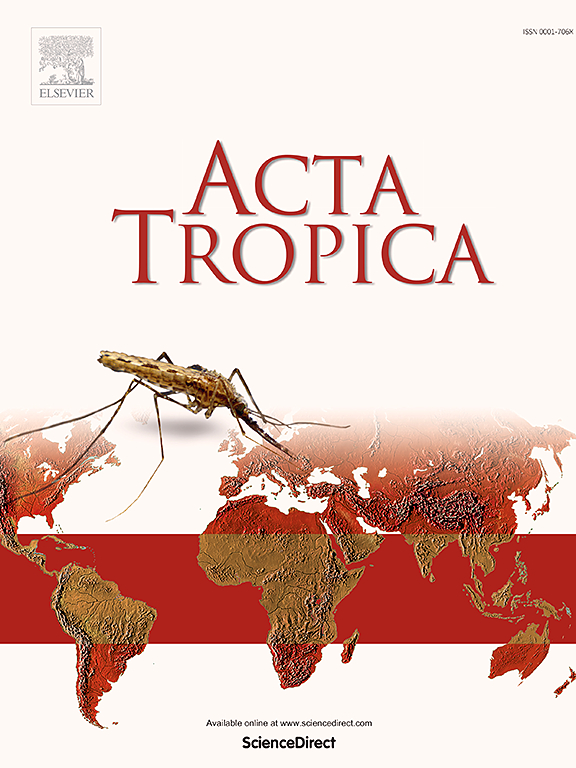Integrating AI for infectious disease prediction: A hybrid ANN-XGBoost model for leishmaniasis in Pakistan
IF 2.5
3区 医学
Q2 PARASITOLOGY
引用次数: 0
Abstract
Addressing leishmaniasis infection remains a substantial challenge in KP-Pakistan due to the increased infection prevalence. Understanding its spreading tool offerings is a major challenge. We essentially design effective approaches to pinpoint its emergence and implement upgraded management strategies. This study aims to assess the prevalence of leishmaniasis infection in KP's four high-endemic districts (Bannu, Karark, Lakki Marwat, and Dera Ismail Khan) and estimate the potential future incidence. We executed a broad logical evaluation on data obtained from the pertinent district health departments of KP, using a novel hybrid ANN-XGBoost approach. We assessed its performance by equating it with frequently used models for infectious disease forecasting over time, comprising the ARIMA, LSTM, ANN, and XGBoost. We evaluated the model's precision using manifold indicators: MAE, RMSE, and MAPE. We developed the models using Python 3.11 software. The results show that the hybrid model outperformed all other models, attaining an MAE score of 82.2, an RMSE of 111.6, and a MAPE of 10.6, validating superior forecast accuracy. According to our proposed model, about 1,017 new leishmaniasis cases are expected per month by December 2025. These findings provide valuable insights for disease monitoring and intervention in KP. Advanced machine learning techniques can help policymakers improve resource mapping and come up with targeted management measures to stop the spread of leishmaniasis. Subsequent research should include other environmental and socio-economic variables influencing illness spread to improve predictive models.
将人工智能用于传染病预测:巴基斯坦利什曼病的混合ANN-XGBoost模型
由于感染流行率上升,处理利什曼病感染仍然是kp -巴基斯坦面临的一项重大挑战。理解其不断扩展的工具提供是一个主要的挑战。我们基本上设计有效的方法来查明其出现并实施升级的管理策略。本研究旨在评估KP的四个高流行区(Bannu、Karark、Lakki Marwat和Dera Ismail Khan)的利什曼病感染流行情况,并估计未来的潜在发病率。我们使用一种新的混合ANN-XGBoost方法,对从KP相关地区卫生部门获得的数据进行了广泛的逻辑评估。我们通过将其与常用的传染病预测模型(包括ARIMA、LSTM、ANN和XGBoost)等同来评估其性能。我们使用多种指标评估模型的精度:MAE、RMSE和MAPE。我们使用Python 3.11软件开发模型。结果表明,混合模型的MAE得分为82.2,RMSE为111.6,MAPE为10.6,优于所有其他模型,验证了较高的预测精度。根据我们提出的模型,到2025年12月,预计每月约有1,017例新的利什曼病病例。这些发现为KP的疾病监测和干预提供了有价值的见解。先进的机器学习技术可以帮助决策者改进资源映射,并提出有针对性的管理措施,以阻止利什曼病的传播。后续研究应包括影响疾病传播的其他环境和社会经济变量,以改进预测模型。
本文章由计算机程序翻译,如有差异,请以英文原文为准。
求助全文
约1分钟内获得全文
求助全文
来源期刊

Acta tropica
医学-寄生虫学
CiteScore
5.40
自引率
11.10%
发文量
383
审稿时长
37 days
期刊介绍:
Acta Tropica, is an international journal on infectious diseases that covers public health sciences and biomedical research with particular emphasis on topics relevant to human and animal health in the tropics and the subtropics.
 求助内容:
求助内容: 应助结果提醒方式:
应助结果提醒方式:


